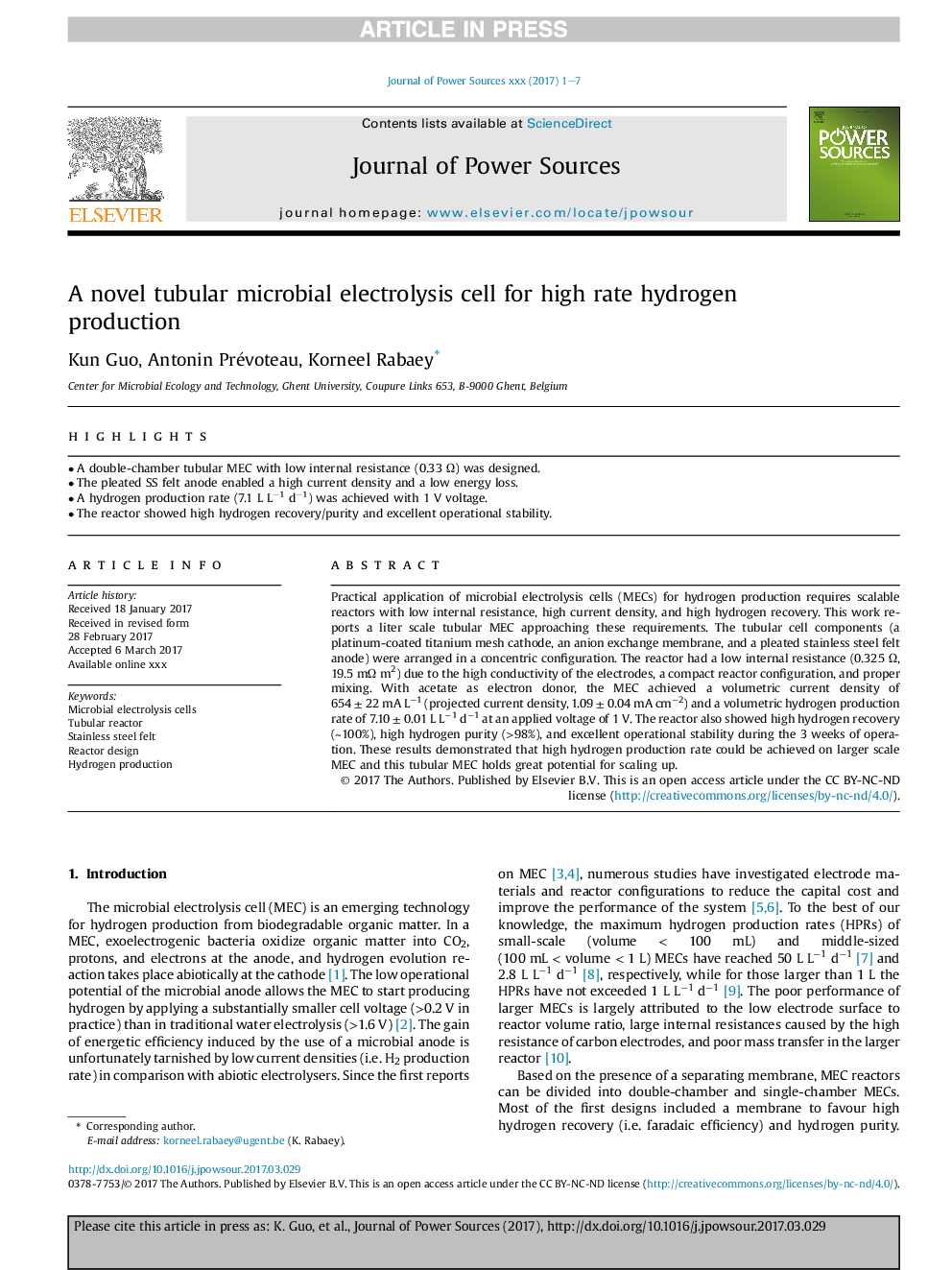| Article ID | Journal | Published Year | Pages | File Type |
|---|---|---|---|---|
| 5149294 | Journal of Power Sources | 2017 | 7 Pages |
Abstract
Practical application of microbial electrolysis cells (MECs) for hydrogen production requires scalable reactors with low internal resistance, high current density, and high hydrogen recovery. This work reports a liter scale tubular MEC approaching these requirements. The tubular cell components (a platinum-coated titanium mesh cathode, an anion exchange membrane, and a pleated stainless steel felt anode) were arranged in a concentric configuration. The reactor had a low internal resistance (0.325 Ω, 19.5 mΩ m2) due to the high conductivity of the electrodes, a compact reactor configuration, and proper mixing. With acetate as electron donor, the MEC achieved a volumetric current density of 654 ± 22 mA Lâ1 (projected current density, 1.09 ± 0.04 mA cmâ2) and a volumetric hydrogen production rate of 7.10 ± 0.01 L Lâ1 dâ1 at an applied voltage of 1 V. The reactor also showed high hydrogen recovery (â¼100%), high hydrogen purity (>98%), and excellent operational stability during the 3 weeks of operation. These results demonstrated that high hydrogen production rate could be achieved on larger scale MEC and this tubular MEC holds great potential for scaling up.
Related Topics
Physical Sciences and Engineering
Chemistry
Electrochemistry
Authors
Kun Guo, Antonin Prévoteau, Korneel Rabaey,
